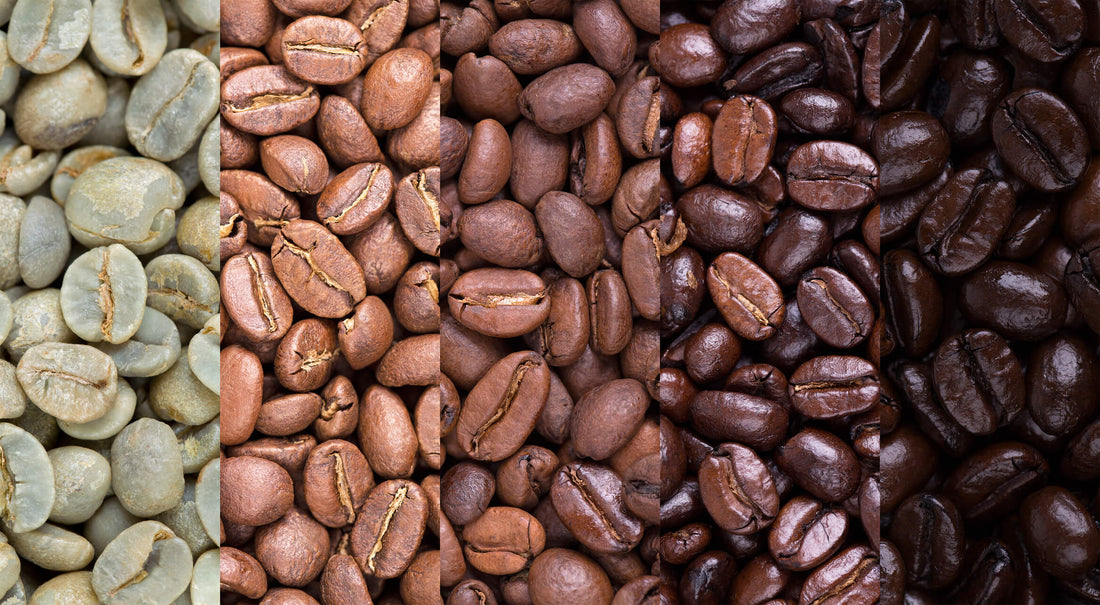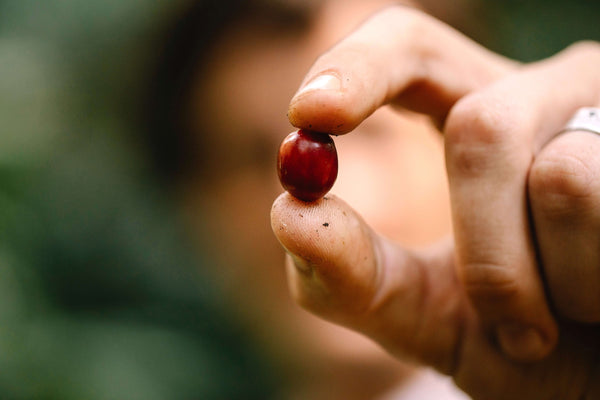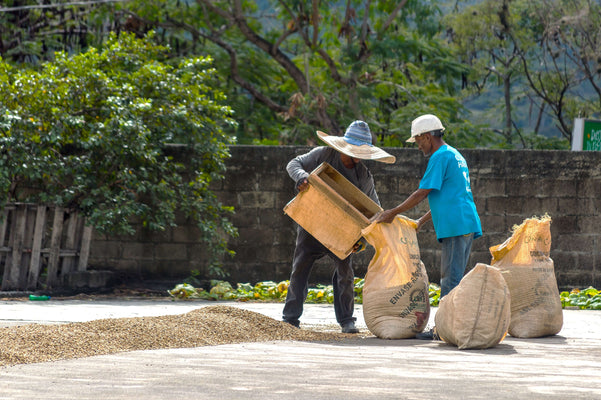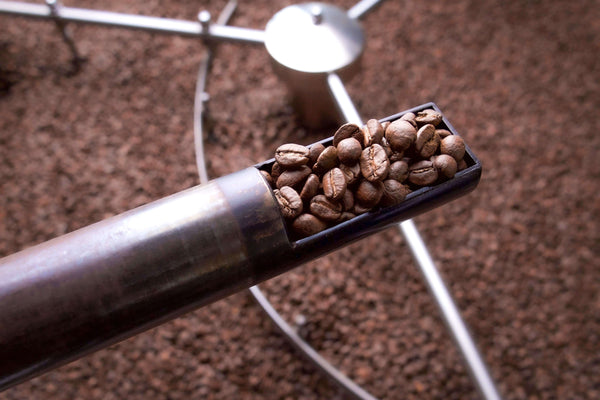
Roasting: The Transformation of Coffee
tai attitude7 min read
Coffee roasting is the process of transforming the physical and chemical properties of green coffee beans into roasted coffee beans.
Transforming is the key word for coffee roasting, simply because it is not possible to roast what is not in the green coffee beans.
With this in mind, for coffee roasting, the green coffee beans used are an important factor to consider. Think of the green coffee beans as an ingredient and the coffee roaster as a chef.
In this article, we will cover the fundamentals of both the physical and chemical changes that coffee roasting brings.
Physical change
Green coffee beans are raw; the goal is to turn them into roasted coffee beans via roasting.
Generally speaking, the longer the roast time, the more heat will be applied to the coffee and the darker the roast. Vice versa.
How long or how dark to roast is a decision by the coffee roaster, often based on output quality and business.
When the roaster decides to end the roasting process, the roasted coffee beans will be obtained as the final product.
For starters, the final colour of the roasted coffee beans is a good indication of the roast level (a.k.a., roast spectrum).
 From left to right, the colour of the bean changes as coffee roasting goes on.
From left to right, the colour of the bean changes as coffee roasting goes on.
- Green Coffee Beans
- Raw
- No physical or chemical change
- Green shade
- Drying Phase
- About 165 °C (329 °F)
- Moisture of the beans evaporates
- A series of chemical reaction activates
- Yellowish-golden shade
- Cinnamon Roast / First Crack
- About 196 °C (385 °F)
- First crack, with audible “popcorn” sound
- Beans expand in size and release CO2
- Cinnamon shade
- Matte, dry surface with chaff
- New England Roast
- About 205 °C (401 °F)
- Light brown shade
- Matte, dry surface with chaff
- American Roast
- About 210 °C (410 °F)
- Brown shade
- Matte, smooth surface, minimal chaff
- City Roast
- About 219 °C (426 °F)
- Darker brown shade
- Smooth surface with few oils, minimal chaff
- Full City Roast / Second Crack
- About 225 °C (437 °F)
- Second crack, with softer audible sound
- Beans swell, release more CO2 and smoke
- Dark chocolate-like colour shade
- Smooth surface with oils present
- Vienna Roast
- About 230 °C (446 °F)
- Dark chocolate-like colour shade
- Smooth surface with oils present
- French Roast
- About 240 °C (464 °F)
- Black shade
- Glossy surface, smooth, and oily
- Italian Roast
- About 245 °C (473 °F)
- Black shade
- Glossy surface, smooth, and oily
In the coffee roasting process, with the rising temperature, green coffee beans undergo transformation; the most obvious one to see is the gradual colour change from green to black.
By hitting a certain temperature range, a roast name is given to indicate the roast level (a.k.a. roast spectrum). Regarding the roast name, these standards do vary from place to place, thus being subjective. Although the provided roast names above are fairly common and widely communicated in the coffee industry, such as City Roast, Italian Roast, etc.
At the Drying Phase, the roasting will begin to give off fragrance due to a series of chemical reaction activations at this temperature, such as the Maillard reaction, Caramelization, etc. These chemical reactions will continue until the roasting process ends.
Pressure develops during roasting, pressurising the hard green coffee beans along the way. When the pressure is finally built up too high on the beans, they will experience a crackle known as the first crack. The coffee bean experiences its first crack at the Cinnamon Roast, which is at about 196 °C (385 °F). This process is audible. For most, coffee is only considered “cooked” from this point on.
After the first crack, the coffee bean's pressure builds up once more, until eventually it reaches another crackle at a higher temperature, known as the second crack. The second crack happens at Full City Roast, which is at about 225 °C (437 °F). This process is also audible. At this stage, the oils of the coffee bean start to migrate from inside to outside the bean, releasing smoke in the process. For most, this is the point at which coffee beans enter the territory of dark roast.
In addition, throughout the coffee roasting process, coffee beans progressively experience moisture loss and a series of chemical reactions that turn dry matter into volatile gases (aromas). Because of this, roasted coffee bean mass is roughly 15–22% less than that of green coffee beans.
At the same time, due to gas behaviour, coffee beans expand in volume. As a result, roasted coffee beans are 50–100% larger, thus more porous and water-soluble.
To summarise, the darker the roast, the lighter, larger, more porous, and more water-soluble the final product becomes. The opposite holds true.
Chemical change
The roasting process is what produces the flavour characteristic of coffee by causing the green coffee beans to change in aroma, taste, and mouthfeel, thereby changing the overall flavour.
During the roasting process, the overall flavour change happens gradually; it goes on and on until the final flavour is set when the roaster decides to end the roast.
Light roasts
The coffee roasting ends at a roast spectrum of Cinnamon Roast or New England Roast. At these roast spectrums, the coffee will showcase more of its enzymatic flavour properties. These are the flavours of fruitiness, florality, and herbyness in general. These prominent enzymatic flavours in light roasts were determined by coffee's cultivar, cultivation, and processing stages. Roasting merely transforms these flavour compound pre-cursors into life via chemical reaction, not by adding them. Therefore, to output high-quality enzymatic flavours, it requires the right cultivar, high-quality cultivation and processing of coffee, and lastly, the skill of a roaster.
Medium roasts
The coffee roasting ends at the roast spectrum of American Roast or City Roast. At these roast spectrums, the coffee's enzymatic flavour properties gradually decrease while the sugar browning flavour properties increase significantly; these are caramel, chocolate, and nutty flavours in general. Sugar browning flavour properties are created during roasting via the optimisation of two main chemical reactions, namely the Maillard reaction and Caramelization. It takes a skilled roaster to output these sugar browning-flavour qualities right.
Dark roasts
The coffee roasting ends at the roast spectrum of Full City, Vienna, French, or Italian Roasts. At these roast spectrums, little to no enzymatic flavour properties remain, sugar browning properties gradually decrease, and dry distillation flavour properties dramatically increase; these are carbony, resinous, spices, and savoury flavours in general. Dry distillation flavour properties are created during roasting mostly via Pyrolysis, a chemical reaction at high heat that gradually breaks down organic compounds to eventually carbon. A skilled roaster minimises the output of dry distillation flavours for the best-tasting dark roasts.
Depending on the green coffee beans used and how the coffee roaster roasts them, the experience might vary. Still, we summarised a table below; these are qualitative descriptions intended as a general guideline.
 Please zoom in to read or download this table.
Please zoom in to read or download this table.
In simplified terms, a lighter roast tends to have more origin flavours, higher acidity, and lower bitterness; a darker roast tends to have more roast flavours, lower acidity, and higher bitterness.
So which roast tastes the best? The answer is subjective and consequently up to the drinker. The truth is, every roast has its fans. Never tried; never truly know. Try to see which one you like best.
For a coffee roaster, which roast is the most challenging to roast? From the roasting perspective, darker roasts are generally harder to pull off due to a longer roast time, higher heat, and overall more involved variables to control. Ultimately, each roast has its own different set of challenges; it really comes down to understanding the green coffee beans (ingredient) used and the roaster's skill level.
Extra information
Roasted coffee beans have a shorter shelf life than green coffee beans; hence, coffee usually remains in green coffee bean form and will only be roasted close to its intended serving period.
Caffeine is a very heat-stable compound with a melting point of 235 °C (455 °F), which by and large remains unaltered by roasting. One would have to roast to French or Italian Roast spectrums to only begin breaking down caffeine in bits.
This article is solely focused on the transformation aspect of coffee roasting. Dedicated roasting articles on chemical reactions, a deep dive into physical changes, how to roast, and more will be published in the future. We appreciate and thank you for reading this far.



